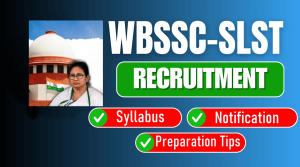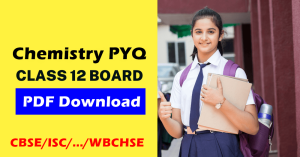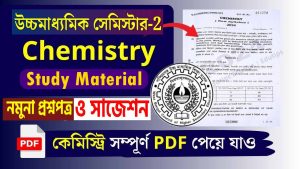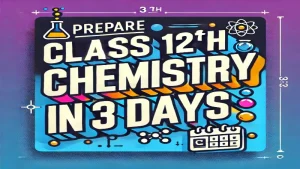The board of education in West Bengal, namely the West Bengal Council of Higher Secondary Education , has released the WBCHSE Chemistry Practical Syllabus For Class 11 and Class 12 2025. Accordingly, we are presenting here the chemistry lab syllabus 2022 for HS WB board. You can refer to this list of experiments when learning the HS chemistry practicals.
WBCHSE Chemistry Practical for Class XI
SUBJECT : CHEMISTRY (CHEM)
CLASS – XI
COURSE CODE : PRACTICAL
FULL MARKS : 30
For class 11, the WBCHSE chemistry practical syllabus has a total of 19 experiments and practices, of a total 30 marks in the exam. Among them, volumetric analysis takes 10 marks, Environment-related experiments takes 8 marks, and Characterization and purification of chemical substances takes 6 marks and Class Record, Project and Viva-voce both take 6 marks. The practicals are supposed to be 15-20 periods long in total. The list of experiments is as follows:
| Evaluation Scheme for Examination | Marks |
| Volumetric analysis | 10 |
| Environment-related experiments | 08 |
| Characterization and purification of chemical substances | 06 |
| Class Record, Project and Viva | 06 |
| Total | 30 |
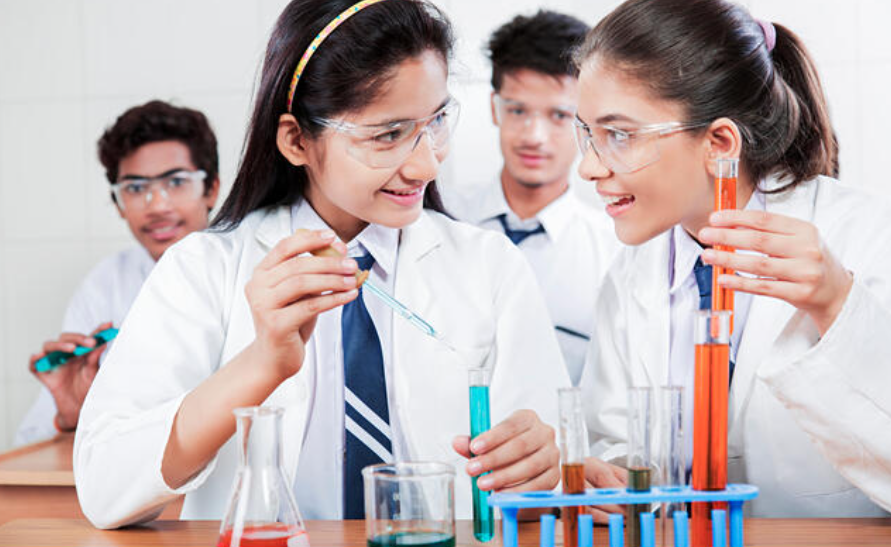
Practical Syllabus For Class XI
A. Basic Laboratory Techniques
i. Cutting glass tube and glass rod
ii. Bending a glass tube
iii. Drawing out a glass jet
iv. Boring a cork
B. Characterization and purification of chemical substances
i. Determination of the melting point of an organic compound
ii. Determination of the boiling point of an organic compound
iii. Crystallization of impure sample of any of the following: Alum, Copper, Sulphate, Benzoic acid.
C. Environment-related experiments
i. Calculation of pH of soil sample.
ii. Determination of turbidity for a given sample of water
iii. Determination of dissolved oxygen in a given sample of water
iv. Determination of TDS of water sample
D. Quantitative estimation (Use of digital balance (precession up to 3 decimal points)) ( Volumetric analysis)
i. Determination of strength of a given sodium hydroxide solution by titrating it against a standard oxalic
acid solution.
ii. Determination of strength of a given hydrochloric acid solution by titrating it against standard sodium
carbonate solution.
iii. Standardisation of KMnO4 solution by using standard Oxalic acid solution.
iv. Estimation of Fe in Mohr’s salt solution using standard KMnO4 solution or standard K2Cr2O7 solution.
Project Work
a) Preparation of standard solutions:
i) Preparation of (N/10) Oxalic acid solution.
ii) Preparation of (N/10) Mohr’s salt solution.
iii) Preparation of (N/10) Sodium carbonate solution.
iv) Preparation of (N/10) Hydrochloric acid solution.
v) Preparation of (N/10) Sodium hydroxide solution.
b) Preparation of inorganic compounds:
i) Preparation of potash alum.
ii) Preparation of potassium ferric oxalate.
c) Study of acidity of
i) Different samples of tea leaves.
ii) Fruit and vegetable juices.
Practical LNB For Class XI
Above Practical LNB For Class XI are published
Chemistry Practical Examination for Class XI
Above Chemistry Practical Examination for Class XI are yet not published, come back after 25.02.2025
WBCHSE Chemistry Practical for Class XII
SUBJECT : CHEMISTRY (CHEM)
CLASS – XII
COURSE CODE : PRACTICAL
FULL MARKS : 30
For class 12, the WBCHSE chemistry practical syllabus has a total of 19 experiments and practices, of a total 30 marks in the exam. Among them, Potentiometric Analysis takes 06 marks, Salt takes 8 marks, and Detection of functional groups in Organic compounds takes 6 marks, Content-Based Experiment takes 6 marks and Class Record, Project and Viva-voce both take 6 marks. The practicals are supposed to be 15-20 periods long in total. The list of experiments is as follows:
| Evaluation Scheme for Examination | Marks |
| Potentiometric Analysis | 06 |
| Salt Analysis | 08 |
| Detection of functional groups in Organic compounds | 04 |
| Content-Based Experiment (Chemical Kinetics/Thermochemistry/ Preparation of Organic Compounds) | 06 |
| Class Record, Project and Viva | 06 |
| Total | 30 |
Practical Syllabus For Class XI
A. Chemical kinetics
(i) Study of the rate of reaction of iodide ions with hydrogen peroxide at room temperature using different
concentrations of iodide ions. (with Excel plot)
(ii) Study of the reaction rate of hydrolysis of ester in an acidic medium (with Excel plot)
B. Thermochemistry :
Any one of the following experiments :
(i) Enthalpy of dissolution of copper sulphate or potassium nitrate.
(ii) Enthalpy of neutralization of strong acid (HCl) and strong base (NaOH)
(iii) Determination of enthalpy change during interaction (hydrogen bond formation) between acetone and
chloroform.
C. Electrochemistry
(i) Potentiometric titration of Fe3+/Fe2+ system with Potassium dichromate and Potassium permanganate
solutions.
(ii) Potentiometric determination of concentration of AgNO3 solution (N/100 or N/200) using standard KCl
solution (N/10).
D. Tests for the functional groups present in organic compounds:
Unsaturation, alcoholic -OH (1° ), phenolic -OH, aldehyde, ketone, carboxylic acid and primary aromatic amine
groups.E. Preparation of Organic compounds:
Preparation of any two of the following compounds :
(i) Benzilic acid (From Benzil)
(ii) Aniline yellow or 2-Naphthol aniline dye.
(iii) Iodoform.
F. Characteristic test of carbohydrates, fats and proteins in pure samples and their detection in given
foodstuffs.
G. Qualitative analysis
Determination of one cation and anion in a given salt.![]()
(Note: Insoluble salts excluded)
Project work – where feasible may include
(i) Model preparation
(ii) Investigatory project
(iii) Science exhibits
(iv) Participation in science fairs
(v) Testing purity of food articles like butter, pulse, milk etc.
Practical LNB For Class XII
Above Chemistry Practical Examination for Class XI are yet not published, come back after 25.08.2025
Chemistry Practical Examination for Class XII
Above Chemistry Practical Examination for Class XI are yet not published, come back after 05.02.2026
The above was the WBCHSE chemistry practical syllabus for classes XI XII. YOu can find the full chemistry syllabus by visiting wbchse.nic.in which is the official website of the West Bengal Council of Higher Secondary Education. You can peruse this curriculum to figure out what may be expected from you in the higher secondary chemistry practical examination.

